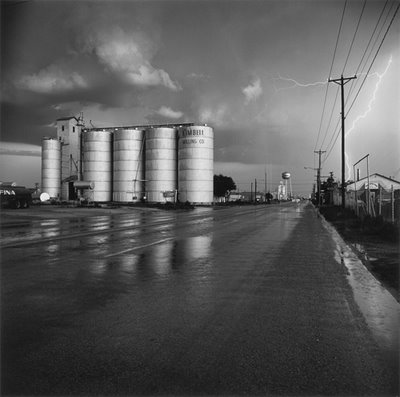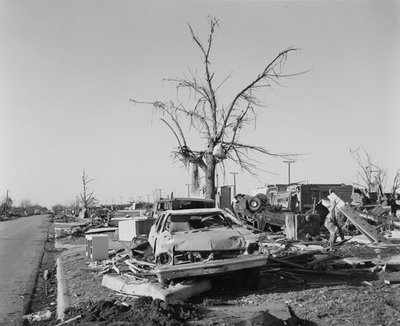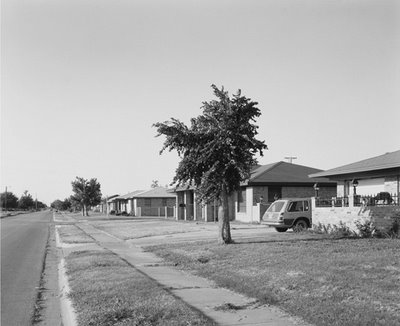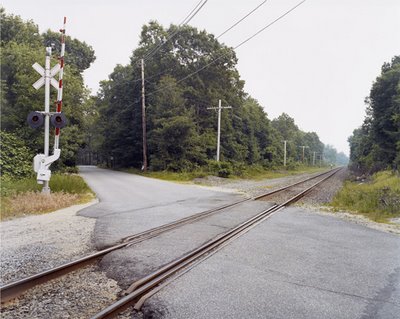Frank Gohlke

From my review of “Accommodating Nature: The Photographs of Frank Gohlke” at the Addison Gallery:
Gohlke won national recognition when he — along with Bernd and Hilla Becher, Stephen Shore, Nicholas Nixon, and others — was included in the George Eastman House’s 1975 exhibition “New Topographics: Photographs of a Man-Altered Landscape.” Their work was seen as a break from the romantic photos of apparently untouched landscapes by folks like Ansel Adams.Read the rest here.
Gohlke’s early photos, from the 1970s, apply a crisp Modernist classicism to observations of scrappy American plains architecture and ruins. Majestic, practical grain elevators stand stoutly along railroad tracks or shimmer at the edge of a wet, black, flat Texas road as lightning crackles in the distance.
His look comes straight out of the flinty photos John Vachon, Jack Delano, and (especially) Walker Evans shot for the Farm Security Administration’s famed Depression-era documentary project. His focus is the vast windswept horizontal vistas of the middle of the country, where the horizon is low, you can see forever, and the sky dominates. People are notably absent; the scenes feel silent except for maybe wind.
Gohlke lived in Massachusetts from 1987 until 2007, when he moved to Arizona. He taught at MassArt on and off between 1988 and 2006.
“Accommodating Nature: The Photographs of Frank Gohlke,” Addison Gallery, Phillips Academy, 180 Main St., Andover, April 12 to July 13, 2008.
Pictured from top to bottom: “Grain Elevator and Lightning Flash, Lamesa, Texas,” 1975; “Aftermath: The Wichita Falls Tornado, 4503 McNeil Street, Looking North,” April 14, 1979, and June 1980; “Aerial View: Looking Southeast Over Windy Ridge nad Visitors Parking Lot, Four and One-Half Miles Northeast of Mount St. Helens, Washington,” 1983; “Village of Boxboro Stateion, Boxboro, Massachusetts,” June 2002.










0 Comments:
Post a Comment
<< Home